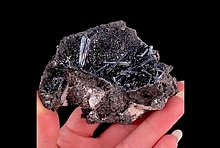Home PageAbout MindatThe Mindat ManualHistory of MindatCopyright StatusWho We AreContact UsAdvertise on Mindat
Donate to MindatCorporate SponsorshipSponsor a PageSponsored PagesMindat AdvertisersAdvertise on Mindat
Learning CenterWhat is a mineral?The most common minerals on earthInformation for EducatorsMindat ArticlesThe ElementsThe Rock H. Currier Digital LibraryGeologic Time
Minerals by PropertiesMinerals by ChemistryAdvanced Locality SearchRandom MineralRandom LocalitySearch by minIDLocalities Near MeSearch ArticlesSearch GlossaryMore Search Options
The Mindat ManualAdd a New PhotoRate PhotosLocality Edit ReportCoordinate Completion ReportAdd Glossary Item
Mining CompaniesStatisticsUsersMineral MuseumsClubs & OrganizationsMineral Shows & EventsThe Mindat DirectoryDevice SettingsThe Mineral Quiz
Photo SearchPhoto GalleriesSearch by ColorNew Photos TodayNew Photos YesterdayMembers' Photo GalleriesPast Photo of the Day GalleryPhotography
╳Discussions
💬 Home🔎 Search📅 LatestGroups
EducationOpen discussion area.Fakes & FraudsOpen discussion area.Field CollectingOpen discussion area.FossilsOpen discussion area.Gems and GemologyOpen discussion area.GeneralOpen discussion area.How to ContributeOpen discussion area.Identity HelpOpen discussion area.Improving Mindat.orgOpen discussion area.LocalitiesOpen discussion area.Lost and Stolen SpecimensOpen discussion area.MarketplaceOpen discussion area.MeteoritesOpen discussion area.Mindat ProductsOpen discussion area.Mineral ExchangesOpen discussion area.Mineral PhotographyOpen discussion area.Mineral ShowsOpen discussion area.Mineralogical ClassificationOpen discussion area.Mineralogy CourseOpen discussion area.MineralsOpen discussion area.Minerals and MuseumsOpen discussion area.PhotosOpen discussion area.Techniques for CollectorsOpen discussion area.The Rock H. Currier Digital LibraryOpen discussion area.UV MineralsOpen discussion area.Recent Images in Discussions
GeneralCrystallinity of Silver Wires

12th Apr 2009 06:02 UTCNH
Thanks!
12th Apr 2009 09:40 UTCRay Hill Expert

12th Apr 2009 14:35 UTCAlfredo Petrov Manager
12th Apr 2009 16:39 UTCRob Woodside 🌟 Manager

15th Apr 2009 06:52 UTCNH
15th Apr 2009 07:57 UTCKnut Eldjarn 🌟 Manager
Knut
18th Apr 2009 09:30 UTCRay Hill Expert
18th Apr 2009 15:41 UTCRob Woodside 🌟 Manager
18th Apr 2009 15:55 UTCDavid Von Bargen Manager
Fluorite Octahedron, dodecahedron, cube
Decreasing temperature, pH and (but more importantly supersaturation).
A lot of crystal habit information is in the eastern European literature ( good summary in Kostov & Kostov "Crystal habits of minerals" )
21st Aug 2019 01:27 UTCPaul Brandes 🌟 Manager
Bumping an old(?) thread about silver wires, there was an interesting article in Geology last month about natural solid-state ion conduction and how it relates to wire silver formation through isotope fractionation. I have a copy of the paper if interested.....

21st Aug 2019 02:46 UTCGareth Evans

21st Aug 2019 04:02 UTCDoug Daniels
21st Aug 2019 06:22 UTCKevin Conroy Manager

21st Aug 2019 21:54 UTCGareth Evans
Neither from tongue or cheek! The process is quite simple and involves basic electrochemistry. Similar techniques have been used to grow some very nice and large copper crystals.It would require the synthesis of an appropriate silver salt, which is very easy to do, and I do have a few kilograms of refined 4N silver in my element collection.The real problem is time. At the moment I am committed to building a display of the lanthanide metals, and I have already posted a few pictures of my work.If there is enough interest in growing metallic crystals perhaps an article might be the best place to highlight the process. What do the managers think?

21st Aug 2019 23:00 UTCDavid K. Joyce Expert
David K Joyce

22nd Aug 2019 05:24 UTCGareth Evans




Mindat.org is an outreach project of the Hudson Institute of Mineralogy, a 501(c)(3) not-for-profit organization.
Copyright © mindat.org and the Hudson Institute of Mineralogy 1993-2024, except where stated. Most political location boundaries are © OpenStreetMap contributors. Mindat.org relies on the contributions of thousands of members and supporters. Founded in 2000 by Jolyon Ralph.
Privacy Policy - Terms & Conditions - Contact Us / DMCA issues - Report a bug/vulnerability Current server date and time: May 11, 2024 10:30:03
Copyright © mindat.org and the Hudson Institute of Mineralogy 1993-2024, except where stated. Most political location boundaries are © OpenStreetMap contributors. Mindat.org relies on the contributions of thousands of members and supporters. Founded in 2000 by Jolyon Ralph.
Privacy Policy - Terms & Conditions - Contact Us / DMCA issues - Report a bug/vulnerability Current server date and time: May 11, 2024 10:30:03












